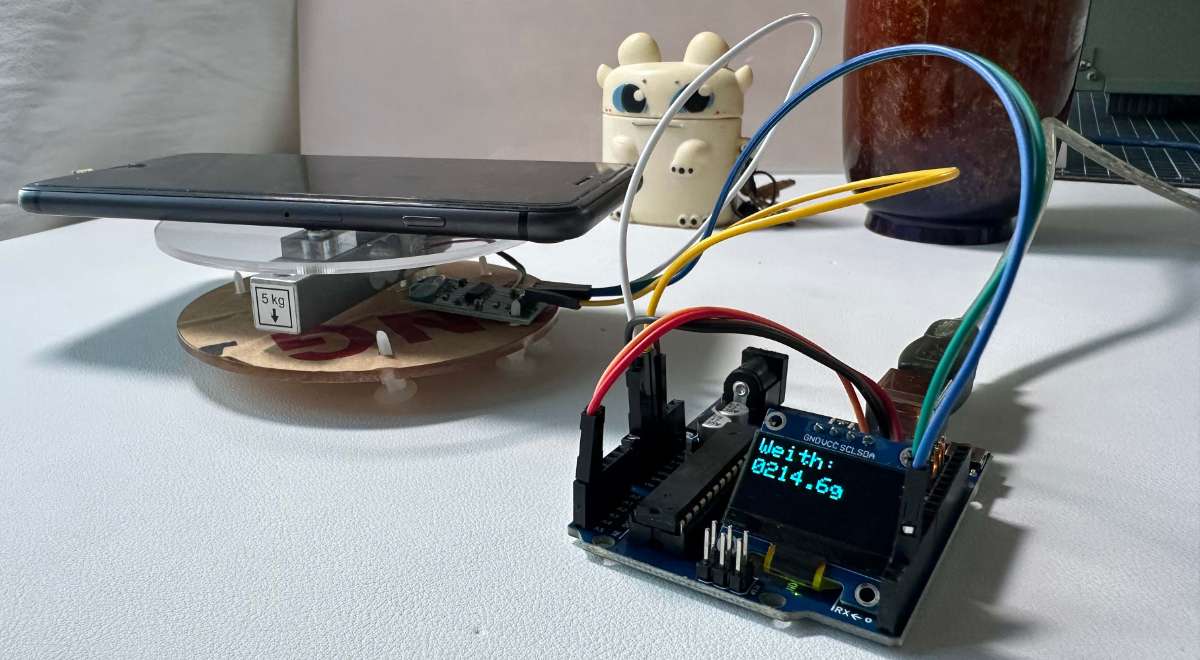Firstly, we need to understand the HX711 module, which is a 24 bit ADC amplifier with built-in amplifier. Its communication method is similar to IIC, but it only sends data to MCU
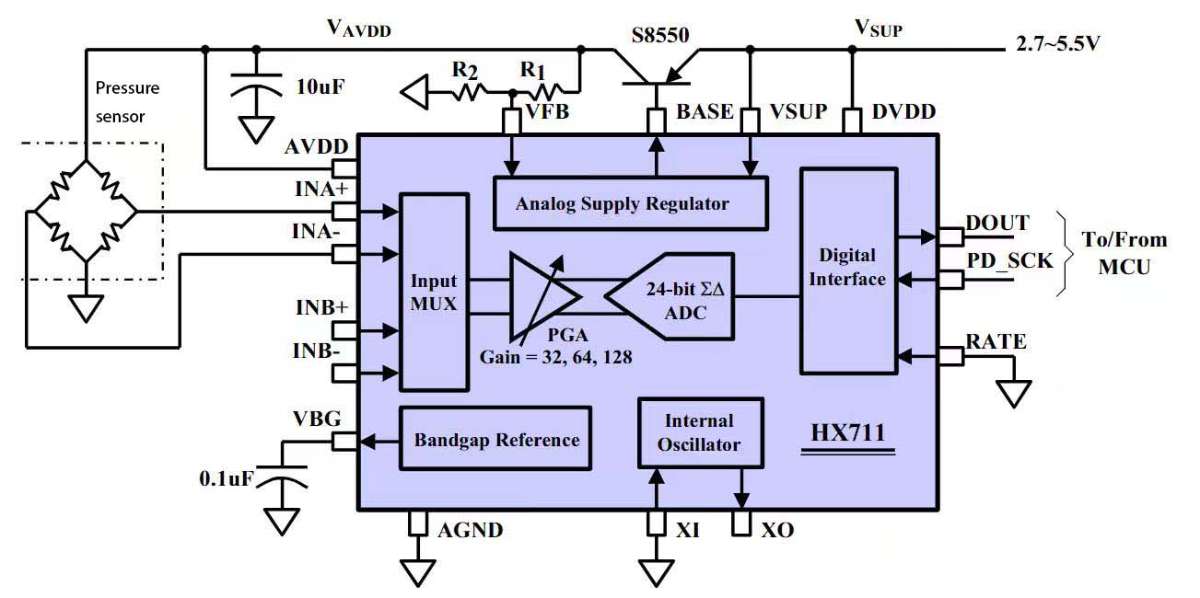
Next, let's learn about his wiring method. GND is connected to the GND of Arduino, VCC is connected to 5V, DT and SCK installation codes are connected to the corresponding pins (here PIN 2 and PIN 3 are connected respectively), E+is connected to the positive pole of the sensor, E - is connected to the negative pole of the sensor, and the data line of the sensor is connected to A+and A-
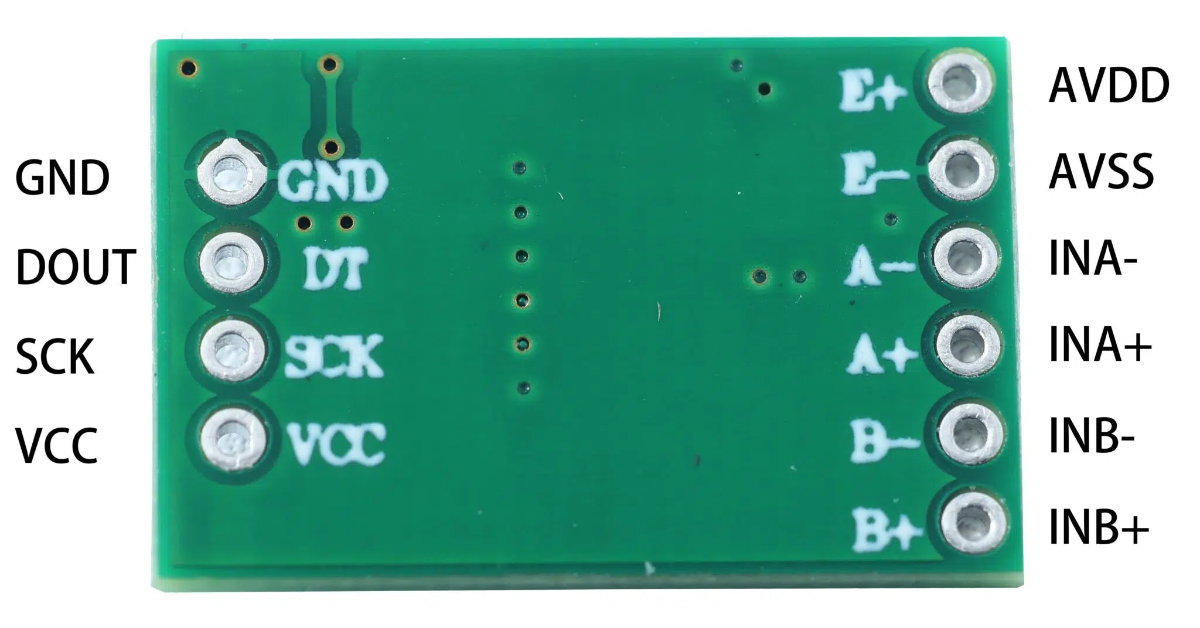
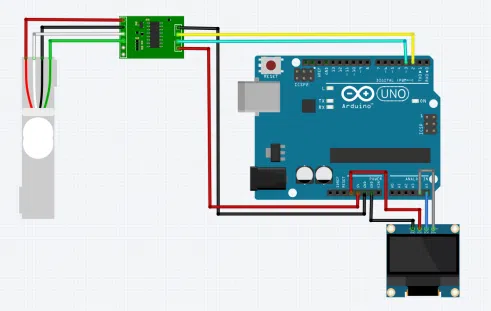
CODE:
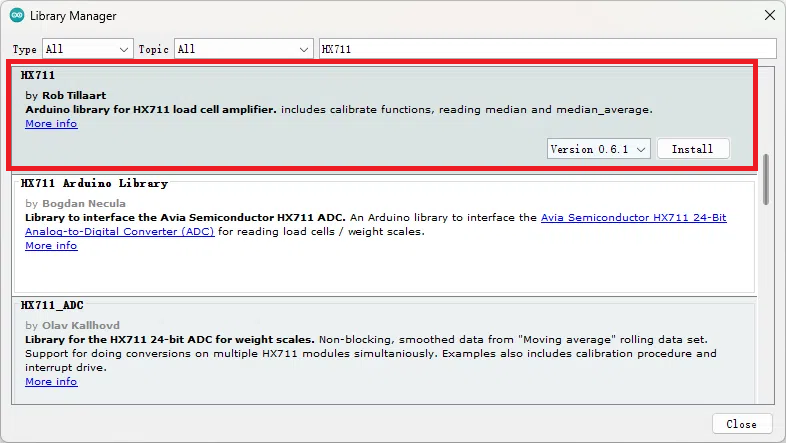
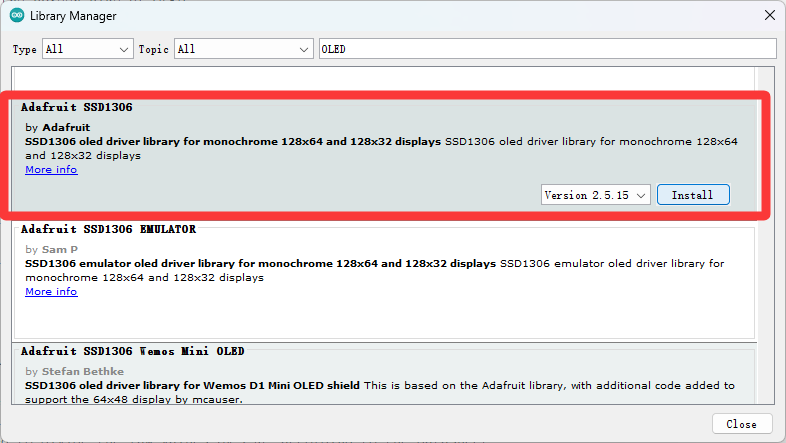
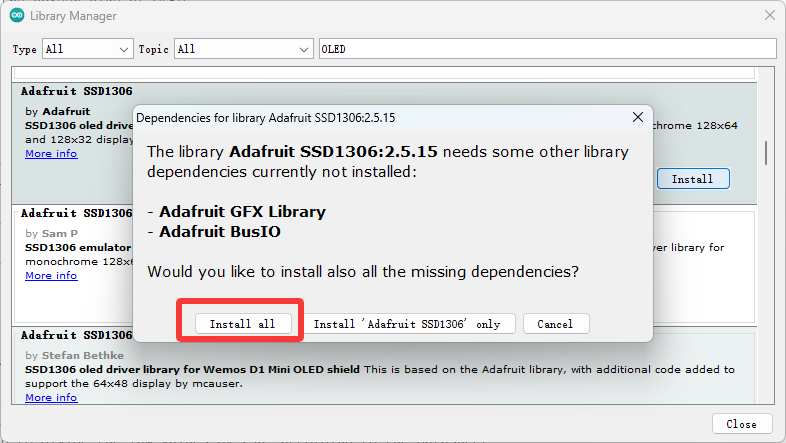
#include <Adafruit_GFX.h>
#include <Adafruit_SSD1306.h>//OLED library
#define ADSK 3
#define ADDO 2
Adafruit_SSD1306 display(128,64, &Wire, -1);
//Set the screen size of OLED
long NormalValue;
long measuer(void);
long Weight;
int AveNub;
char i;
void setup() {
//Serial.begin(9600);//Serial port initialization
AveNub=5;//The larger the number of reads, the more stable it is, but also slower
pinMode(ADSK,OUTPUT);
pinMode(ADDO,INPUT);
digitalWrite(ADSK,0);
display.begin(SSD1306_SWITCHCAPVCC, 0x3C);//Initialize OLED and set IIC communication address
NormalValue=measuer();//Store initial error value
}
void loop() {
for(i=1;i<AveNub;i++)
{
Weight+=(measuer()-NormalValue);
}
Weight/=AveNub;
//Serial.println(Weight/210);
//Sent to the serial port,/400 is a parameter that converts pressure into weight and needs to be adjusted slowly
display.clearDisplay();//Clear screen
display.setTextColor(WHITE);//Setting text color, monochrome OLED is invalid, but must have
display.setTextSize(2);//Set text size
display.setCursor(0, 0);//Set the starting X and Y axes of the text
display.print("Weith:");
display.setCursor(0, 20);
if(Weight<0)//If the weight is less than 0, there may be bugs when using OLED display directly
{
display.print("-");
display.print((Weight/(-210000))%10);
display.print((Weight/(-21000))%10);
display.print((Weight/(-2100))%10);
display.print((Weight/(-210))%10);
display.print(".");
display.print((Weight/(-21))%10);
}
else//重量大于0
{
display.print((Weight/210000)%10);
display.print((Weight/21000)%10);
display.print((Weight/2100)%10);
display.print((Weight/210)%10);
display.print(".");
display.print((Weight/21)%10);
}
display.print("g");
display.display();//Execute Display
}
long measuer()//Read function, channel A, gain 64
{
long Count;
char i;
digitalWrite(ADSK,0);
Count=0;
while(digitalRead(ADDO));
for (i=0;i<24;i++)
{
digitalWrite(ADSK,1);
delayMicroseconds(1);
Count=Count<<1;
digitalWrite(ADSK,0);
delayMicroseconds(1);
if(digitalRead(ADDO))
Count++;
}
digitalWrite(ADSK,1);
Count=Count^0x800000;
digitalWrite(ADSK,0);
digitalWrite(ADSK,1);
digitalWrite(ADSK,0);
digitalWrite(ADSK,1);
digitalWrite(ADSK,0);
return Count;
}Once the parameters are debugged, an accurate electronic scale can be obtained
